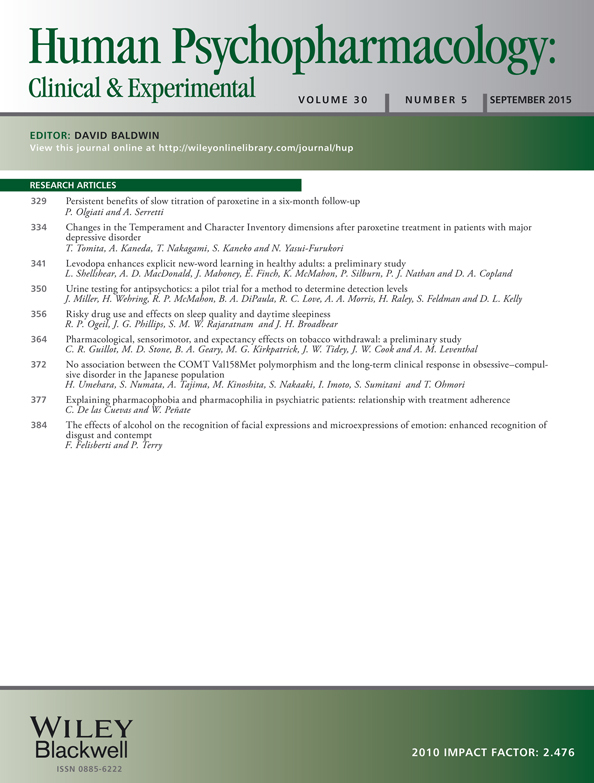Persistent benefits of slow titration of paroxetine in a six-month follow-up
Abstract
Objective
Paroxetine titration may be difficult in older individuals as they are more sensitive to side effects. The current study extends to 6 months our previously published report in which paroxetine was started at 2.5 mg/day and slowly increased by 2.5 mg on alternate days (slow titration) or rapidly titrated to target dose from 10 mg/day (standard titration) in a naturalistic setting.
Methods
Here, the follow-up period was extended to 26 weeks. We performed an intent-to-treat analysis of 47 subjects from the original sample (major depressive disorder and/or generalized anxiety disorder (GAD); >60 years of age). Missing evaluations were replaced by last observations carried forward. GAD was included as a stratification factor.
Results
Patients in whom paroxetine was slowly up-titrated were more likely to remit (84.0% vs 54.5%; p = 0.028) and had lower core depression (p = 0.0015) and psychic anxiety levels (p = 0.006) after 26 weeks. Dropout rate was 20% in the slow titration group compared with 77.3% in the standard titration arm (p < 0.001). Patients with GAD accounted for all significant associations. No substantial differences were reported between slow and standard titration groups in the subsample without GAD.
Conclusions
Despite some limitations, these findings suggest that paroxetine treatment should be started at lower doses in older depressed patients and slowly up-titrated. This strategy would allow to increase antidepressant response and the likelihood of completing treatment cycle in patients with high anxiety levels and GAD comorbidity. Copyright © 2015 John Wiley & Sons, Ltd.




